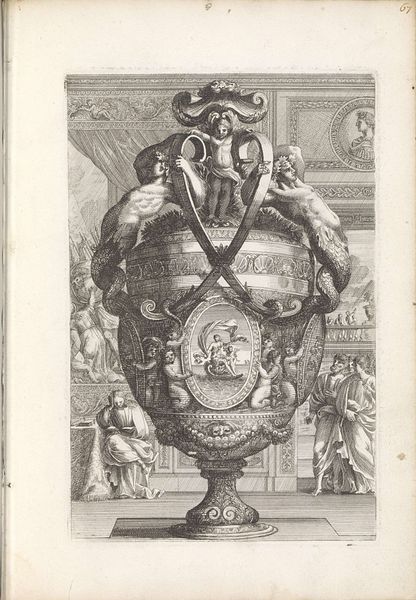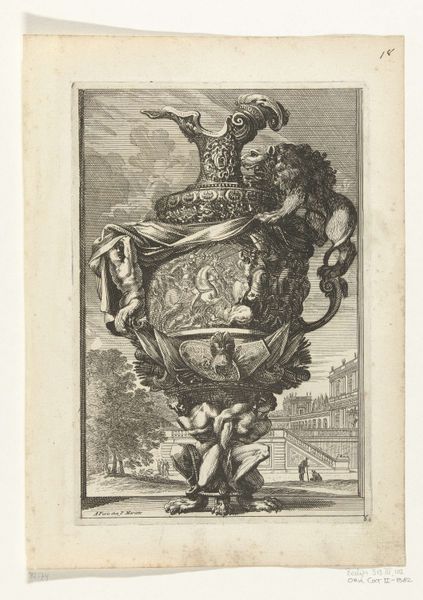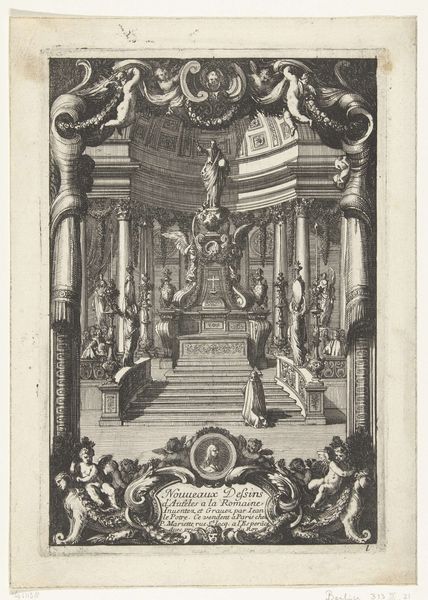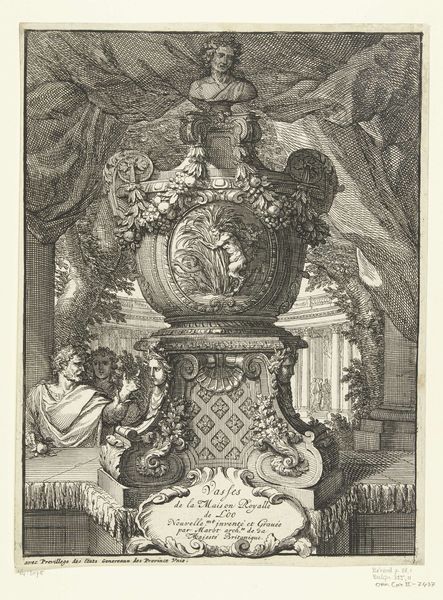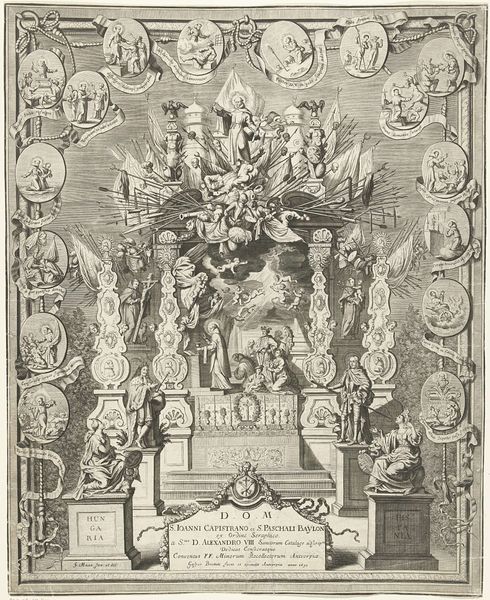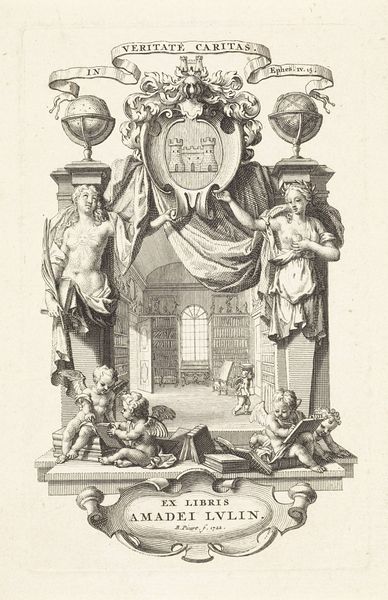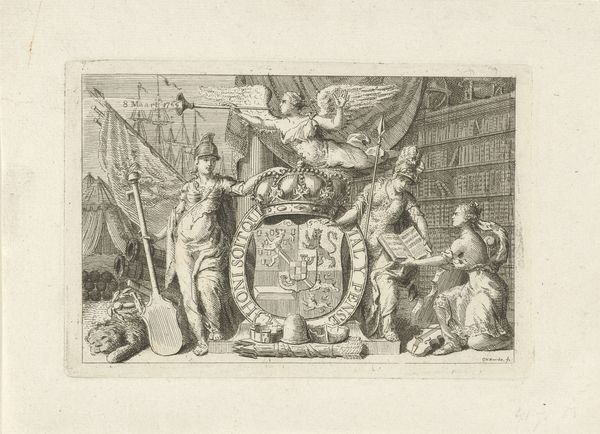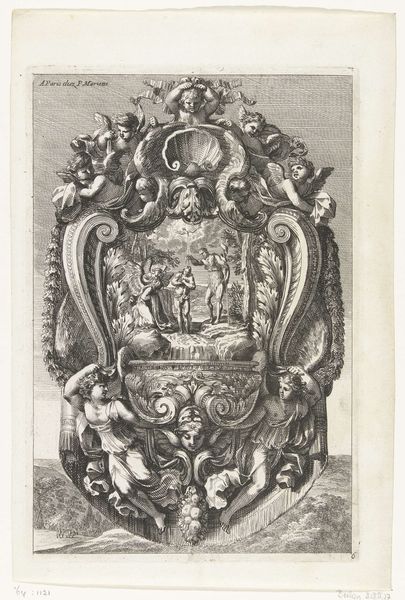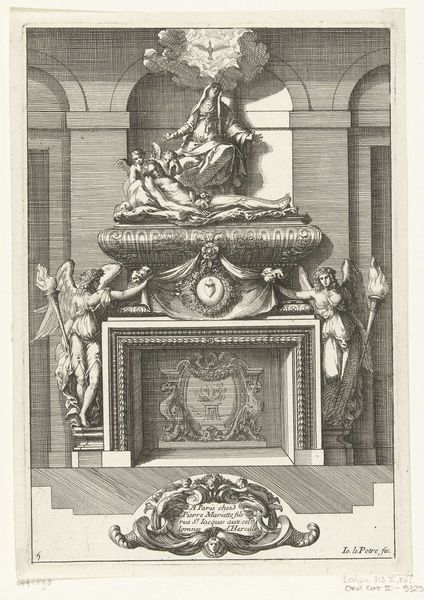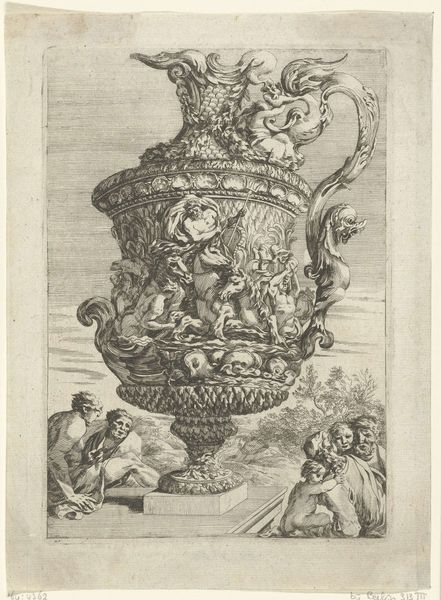
drawing, ornament, print, etching, engraving
#
drawing
#
ornament
#
baroque
# print
#
pen sketch
#
etching
#
old engraving style
#
engraving
Dimensions: height 219 mm, width 145 mm
Copyright: Rijks Museum: Open Domain
This is Cornelis Danckerts the Second’s etching, “Vaas,” created in the Netherlands sometime between 1671 and 1717. During this period, the Dutch Golden Age was in full swing. The Dutch Republic was a major economic power, deeply involved in global trade. The print presents a grand vase, adorned with classical figures and scenes. The vase itself seems to be a celebration of wealth and power. Its intricate design and classical imagery signal a connection to the cultural elite of the time, who often looked to classical antiquity for inspiration and legitimization. The cherubic figures and the oval scene at the center, which seems to depict a mythological narrative, contribute to an overall sense of idealized beauty. However, one might also read a tension in this image between its ostentatious display of wealth and the social realities of the Dutch Golden Age, which involved a complex system of trade and colonization that impacted people across the globe. The vase, then, becomes not just a symbol of beauty but also a complex emblem of its time.
Comments
No comments
Be the first to comment and join the conversation on the ultimate creative platform.


